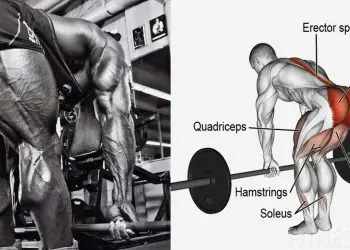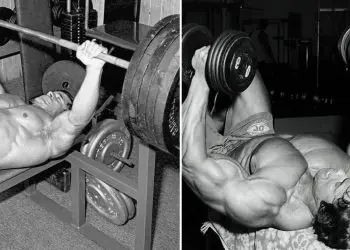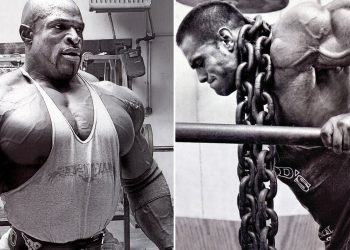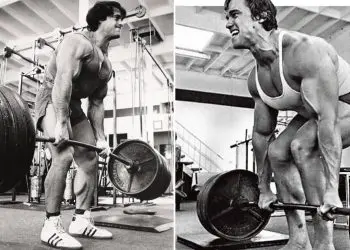Whether you are training your legs for tone, mass or strength, squats are one of the single most productive exercise we can include in our training. Many variations for this exercise exist, and they can be performed with several types of resistance ranging from body weight, resistance bands, or heavy dumbbells, and barbells loaded with hundreds of pounds. For those serious about training their legs, the two most popular variations of this exercise are the traditional barbell back squat, and the front squat.
With a weight-loaded barbell resting across the back of your shoulders, stand with your feet shoulder-width apart and grasp the bar with both hands. Shift your weight into your heels, and squat down until the tops of your thighs are just below the tops of your knees. Drive your heels downward into the floor, and extend your legs until you are standing upright again. Keep your core braced, and your back straight throughout the entire movement. With practice, you should be able to squat down until your hamstrings are pushed up against your calves. This will mean less weight, but the larger range of motion will reap greater results, than a heavier incomplete movement.
The back squat is one of the greatest mass-building exercises, and it is a full-body compound movement. The quadriceps, hamstrings, gluteus muscles, erector spinae, gastrocnemius, soleus, adductor, and core muscles are all trained with this one exercise. Back squats can be performed with light weight for conditioning and definition, or heavier weight for both mass-building and power-building goals. Regardless of an individual’s fitness goals, back squats often are considered by athletes and trainers to be the quintessential leg exercise.While front squats do not target the hamstrings and gluteus muscles as directly as back squats, they do focus the training on the heads of the quadriceps. For this reason, many strength athletes perform front squats as an auxiliary exercise. Another advantage of the front squat is that, since the barbell is supported in front of the neck, the torso remains more vertical, placing less stress on the lower back. There are far less compressive forces at the knee as well, so for some this is an ideal exercise to partially replace the benefits of the back squat.Stand with a weight-loaded barbell resting across the tops of your anterior deltoids, or the front parts of your shoulders, in front of your neck, and use a clean grip. In this position, your elbows should be held high throughout the entire lift. Your feet should be shoulder-width apart. Keeping your core braced and your back vertical, squat down until your hamstrings touch your calves. Extend your legs and stand up, returning to the starting position.Here is a method I often use to replace back squats, and have found it to be very effective in increasing strength, as well as lessening the load that my back and knees have to deal with.
If you have any questions or need further clarification about this article, please leave a comment below, and Justin will get back to you as soon as possible.








